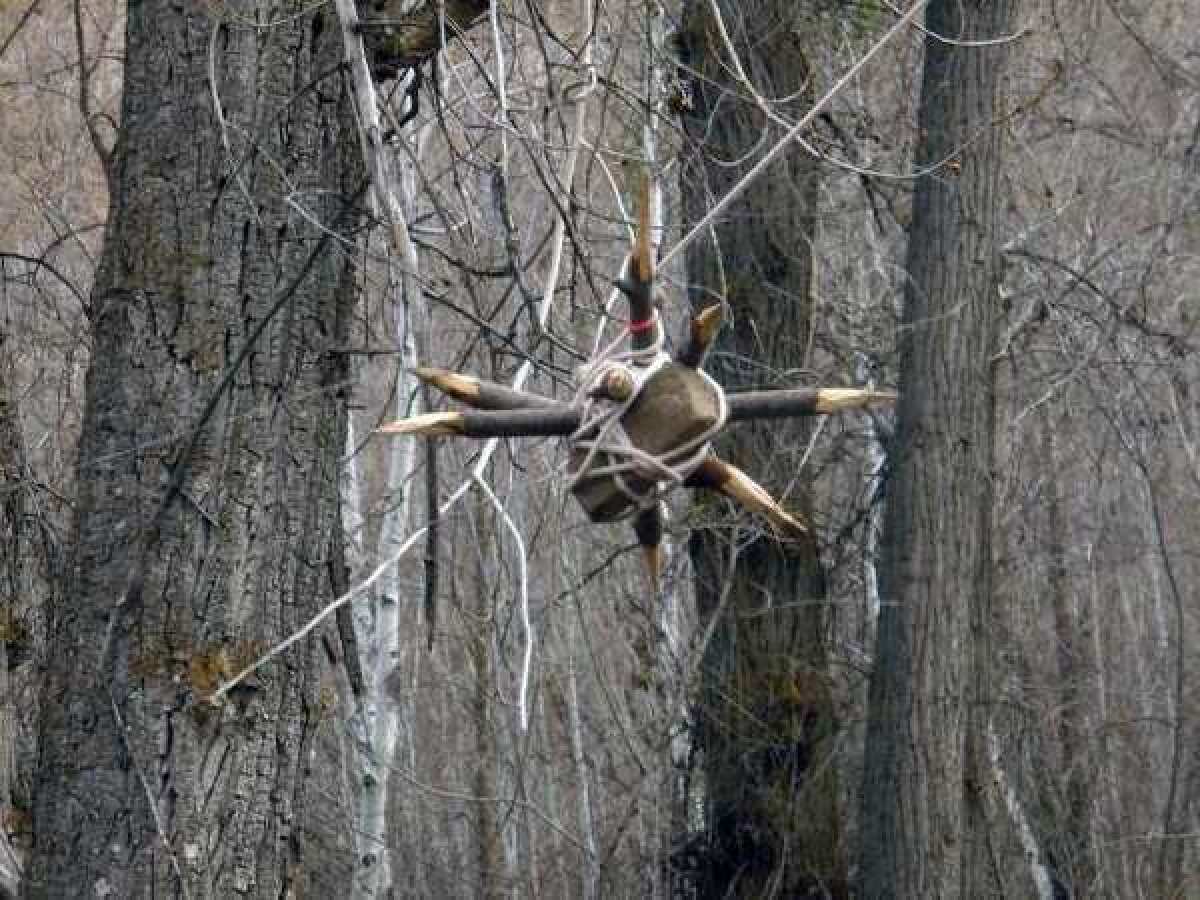Utah booby traps: Military training helped officer see trip wires

The trip wires rigged to potentially deadly booby traps in a popular Utah recreation area were so slender they were practically invisible to the average eye. But James Schoeffler’s eyes are not average.
During his tours of duty in Iraq and Afghanistan, it was Schoeffler’s job to find such trip wires and dismantle the explosive devices to which they were attached. He never expected to find himself doing the same job in a forest in Utah.
Authorities are lauding Schoeffler as a hero after he spotted trip wires to a pair of deadly traps just off Big Springs Trail in Provo Canyon.
The traps looked like something out of a Hollywood horror film. One was designed to send a 20-pound, spiked boulder swinging into the head or chest of an unsuspecting victim. The other would impale its victim onto a bed of sharpened wooden stakes.
“I’ve seen devices all over the world, but I never thought I’d see one in rural Utah,” Schoeffler told the Los Angeles Times.
Two men have been arrested and are said to have confessed to rigging up the traps. They told Utah County sheriff’s deputies that they wanted to catch a wild boar, or “bunnies.”
Schoeffler says he believes those traps were meant for two-legged prey: “Even a layman can look at that and realize those are not set up for animals.”
It was Schoeffler’s sharp eyesight, combined with luck and good timing, that kept someone from wandering into the traps, located about a half mile from the recreation area’s parking lot. The traps were set up at the entrance to a makeshift shelter amid the trees, typically used as a windshield for campers building a fire or for kids sneaking away for a place to smoke and drink.
A child’s birthday party was being celebrated on the day that Schoeffler discovered the traps. He said he’d prefer not to imagine what might have happened had a child -- or a hiker, or mountain biker -- happened along before he did.
Schoeffler, 33, was in the Army with three tours to his service, two in Kosovo and one in Iraq. After retiring, he joined the Air Force Reserve, which took him to Afghanistan in 2010.
During those tours, Schoeffler worked as an explosives ordnance disposal technician. “Did you see the movie ‘Hurt Locker’? That’s the best way to describe it,” he said.
He’s been a law enforcement officer with the U.S. Forest Service since 2008. Schoeffler, whose father is retired from the Forest Service, says the job suits him well. “You get to be outside all day -- and be a police officer. It combines the best of both jobs.”
And it was in that capacity that he set out last week on what was supposed to be an average day on the job, monitoring the wilderness areas in Utah that are popular with families and recreational hikers, cyclists and campers.
And that’s when he saw the glimmer of the triple-strung trip wire.
“In nature, nothing is straight, nothing is black and white,” he said, explaining how the wires caught his eye. “In nature, everything is irregular -- the shapes, the colors, it’s all irregular. So when you have something that is a regular pattern, it sticks right out.”
He said his military training served him well in this case. He recalled that in Afghanistan, he would routinely have to ferret out trip wires the width of sewing string in a field of wheat. Compared with that, the trip wire in Utah was easy to spot.
“My initial thought was that someone was pulling a practical joke to trip people,” he said. But when he began following the trail of the wire he discovered otherwise.
“I traced it to the left, and saw it was almost like a pendulum,” he said of the trap designed to send weighted wooden spikes sailing into a target.
Schoeffler disabled that trap and another one after taking photos and video of the site. He said that, though the traps lacked sophistication, they were deadly nonetheless: “They were extremely rudimentary, but it works.”
Schoeffler rejected any “hero” talk. “Absolutely not. I was just doing my job.”
He said he believes the real story is the dogged determination that Utah County Sheriff’s Sgt. Wayne Keith brought to the case. “He is a tenacious, tenacious investigator,” Schoeffler said, adding that Keith used social media to track down the suspects and then gained a confession from them.
For the record, Schoeffler found the Oscar-winning movie “The Hurt Locker” unrealistic, saying the characters were too cavalier and got too much enjoyment out of blowing things up. The point is to dismantle a device before it explodes, he said.
In Schoeffler’s world, explosions equal failure.
ALSO:
Heart Attack Grill strikes again!
Like fat cats? This one weighs 39 pounds
Space shuttle Enterprise’s NYC flyover is delayed -- again
More to Read
Sign up for Essential California
The most important California stories and recommendations in your inbox every morning.
You may occasionally receive promotional content from the Los Angeles Times.











